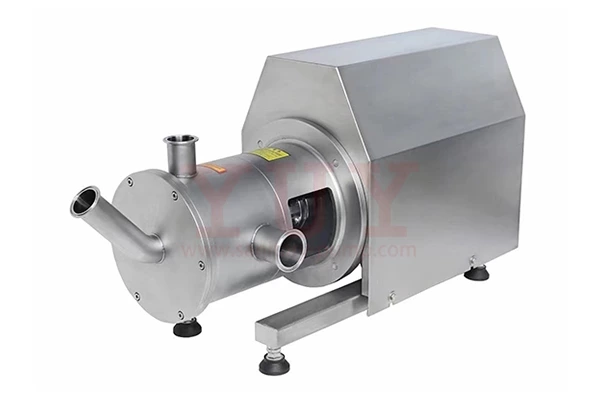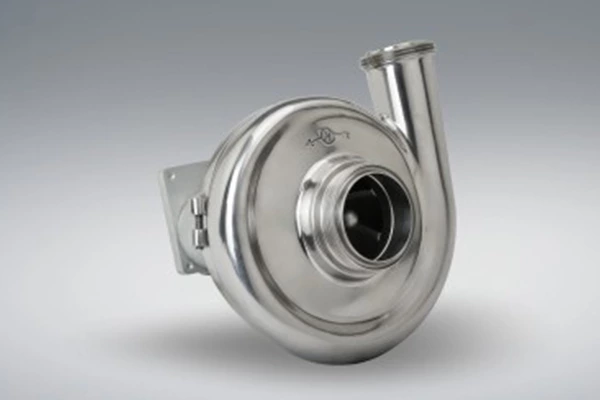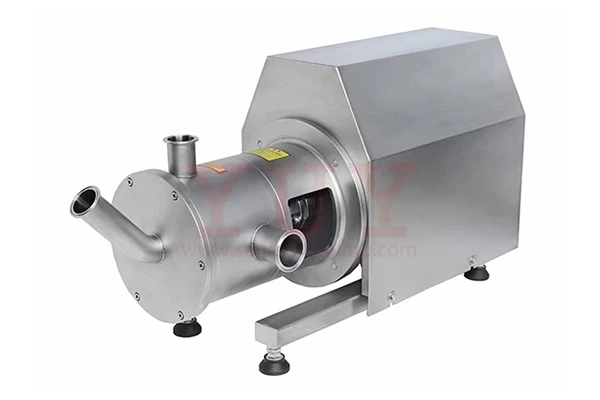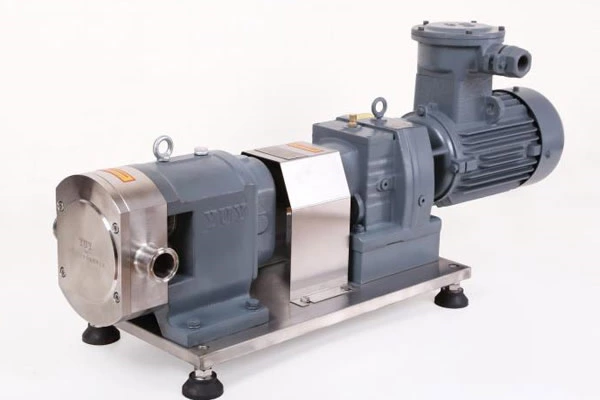Would You Choose A Diaphragm Pump
1. Selection of the action mode of the diaphragm pump
The action mode of the diaphragm pump is only available when a pneumatic actuator is selected. Its action mode is formed by the combination of the positive and negative actions of the actuator and the positive and negative actions of the valve. There are four combinations, namely positive positive (air-closed type), positive negative (air-open type), negative negative (air-open type), and negative negative (air-closed type). The diaphragm pump action modes formed by these four combinations are air-open and air-close.
For the selection of the action mode of the diaphragm pump, three aspects are mainly considered:
(1) process production safety;
(2) characteristics of the medium;
(3) ensuring product quality and minimizing economic losses.
2. Selection of Solid-Liquid Mixing Pump flow characteristics
The flow characteristics of the diaphragm pump refer to the relationship between the relative flow rate and displacement (relative opening of the valve) of the medium flowing through the valve. The ideal flow characteristics mainly include four types: linear, equal percentage (logarithmic), parabola and fast opening. The commonly used ideal flow characteristics are only linear, equal percentage (logarithmic) and fast opening. The parabolic flow characteristic is between the straight line and the equal percentage characteristic, and can generally be replaced by the equal percentage characteristic. The quick opening characteristic is mainly used in two-position regulation and program control. Therefore, the selection of the diaphragm pump characteristic is actually the selection of the straight line and the equal percentage flow characteristic.
The selection of the diaphragm pump flow characteristic can be calculated theoretically, but the methods and equations used are very complicated. At present, empirical criteria are mostly used, and the following aspects are considered:
(1) Analyze and select from the regulation quality of the regulation system;
(2) Consider the process piping conditions;
(3) Analyze from the load change conditions.
After selecting the flow characteristic of the diaphragm pump, the shape and structure of the valve core can be determined according to its flow characteristic. However, for diaphragm valves, butterfly valves, etc., due to their structural characteristics, it is impossible to achieve the required flow characteristic by changing the curved surface shape of the valve core. At this time, it can be achieved by changing the feedback cam shape of the valve positioner.
3. Selection of diaphragm pump caliber
The selection and determination of the diaphragm pump caliber is mainly based on the flow capacity of the valve, i.e., cv. When designing and selecting instruments for various projects, the diaphragm pump must be calculated for cv and a diaphragm pump design manual must be provided. From the diaphragm pump cv calculation to the valve caliber determination, the following steps are generally required:
(1) Determination of the calculated flow rate. The existing production capacity, equipment load and medium conditions determine the calculated flow rate qmax and qmin.
(2) Determination of the pressure difference before and after the valve. Select s (resistance coefficient) according to the selected valve flow characteristics and system characteristics, and then determine the calculated pressure difference.
(3) Calculation of cv. Select appropriate calculation formulas and charts according to the regulated medium to obtain cmax and cmin.
(4) Select cv. According to cmax, select the first level c that is >cmax and closest to it in the selected product standard series.
(5) Diaphragm pump opening verification. Generally, the opening at the maximum calculated flow rate is required to be ≯90%, and the opening at the minimum calculated flow rate is required to be ≮10%.
(6) Verification of the actual adjustable ratio of the diaphragm pump. Generally, the actual adjustable ratio is required to be ≮10.
(7) Determination of valve seat diameter and nominal diameter. After verification, determine according to c.
4. Selection of diaphragm pump type
(1) Selection of diaphragm pump valve body type
The selection of valve body is the most important link in the selection of diaphragm pump. There are many types of diaphragm pump valve bodies, and the commonly used ones are straight-through single seat, straight-through double seat, angle, diaphragm, small flow, three-way, eccentric rotation, butterfly, sleeve, ball and other 10 types. Before selecting a valve, it is necessary to carefully analyze the media, process conditions and parameters of the control process, collect sufficient data, understand the system's requirements for the diaphragm pump, and determine the type of valve to be used based on the collected data. When making a specific selection, the following aspects can be considered:
A. The shape and structure of the valve core is mainly based on the selected flow characteristics and unbalanced force and other factors.
B. Wear resistance When the fluid medium is a suspension containing a high concentration of abrasive particles, the joint surface of the valve core and the valve seat will be severely rubbed every time it is closed. Therefore, the flow path of the valve should be smooth and the internal material of the valve should be hard.
C. Corrosion resistance Since the medium is corrosive, try to choose a valve with a simple structure while meeting the regulation function.
D. Temperature and pressure of the medium When the temperature and pressure of the medium are high and vary greatly, a valve with a valve core and a valve seat material that is less affected by temperature and pressure changes should be selected.
E. Prevent flashing and cavitation Flashing and cavitation only occur in liquid media. In actual production processes, flashing and cavitation not only affect the calculation of the flow coefficient, but also cause vibration and noise, shortening the service life of the valve. Therefore, when selecting a valve, the valve should be prevented from flashing and cavitation.
(2) Selection of diaphragm pump actuators
A. Consideration of output force
No matter what type of actuator, its output force is the effective force used to overcome the load (mainly refers to the unbalanced force and unbalanced torque plus the effects of friction, sealing force, gravity and other related forces). Therefore, in order for the diaphragm pump to work properly, the actuator used must be able to generate sufficient output force to overcome various resistances and ensure high sealing and valve opening.
For double-acting pneumatic, hydraulic, and electric actuators, there is generally no return spring. The magnitude of the force has nothing to do with its running direction. Therefore, the key to selecting an actuator is to find out the maximum output force and the torque of the motor. For single-acting pneumatic actuators, the output force is related to the opening of the valve, and the force on the diaphragm pump will also affect the motion characteristics. Therefore, it is required to establish a force balance in the entire opening range of the diaphragm pump.
B. Determination of the actuator type
After the output force of the actuator is determined, the corresponding actuator is selected according to the requirements of the process use environment. When there is an explosion-proof requirement on site, a pneumatic actuator should be selected, and the junction box should be explosion-proof, and an electric actuator cannot be selected. If there is no explosion-proof requirement, both pneumatic and electric actuators can be selected, but from the perspective of energy saving, electric actuators should be selected as much as possible. As for hydraulic actuators, their use is not as extensive as pneumatic and electric actuators, but they have the characteristics of high adjustment accuracy, fast and stable action speed. Therefore, in some cases, in order to achieve better adjustment effects, hydraulic actuators must be selected, such as speed adjustment of transparent machines in power plants, temperature control of catalytic reactors in refineries, etc.
5. Precautions for diaphragm pump operation
(1) Diaphragm pump start-stop load operation
The diaphragm pump is driven by a variable frequency motor. If the start-stop load is too large or too small, the motor is easily damaged. In order to avoid the above situation as much as possible, it is strictly stipulated that the start-stop load is controlled at about 30%, and the instrument is set so that the increase and decrease of load must be completed within a period of time, which effectively achieves the maintenance of the frequency converter from a process perspective.
(2) Operation of the diaphragm pump instrument air and lubricating oil pressure system
The instrument air and lubricating oil pressure of the diaphragm pump are interlocked with the main motor. The injection and drain valves of the propulsion fluid are air-closed valves. A certain air pressure must be maintained at all times. The minimum operating pressure of the two valves is not less than 0.4 MPa. Therefore, the instrument air pressure is generally maintained above 0.15 MPa. Even after the pump is stopped, the instrument air is not stopped to avoid insufficient or excessive liquid in the propulsion fluid chamber. The air supplied to the valve is filtered and oil-atomized.
When the diaphragm pump is in operation, the lubricating oil pressure should not be lower than the pressure interlock value (0.115 MPa), and the pressure difference of the lubricating oil outlet filter should not be too large. The steel ball in the lubricating oil flow mirror should be at the upper limit position. When adjusting this flow, the adjustment range should not be too large to avoid excessive pressure drop due to excessive instantaneous flow, causing interlock tripping.
Through the above process improvements and the mastery of the key points of operation, the diaphragm pump always has a stable process environment during operation. In more than a year of operation, there has only been one trip due to electrical reasons, achieving long-term, safe and efficient operation.











